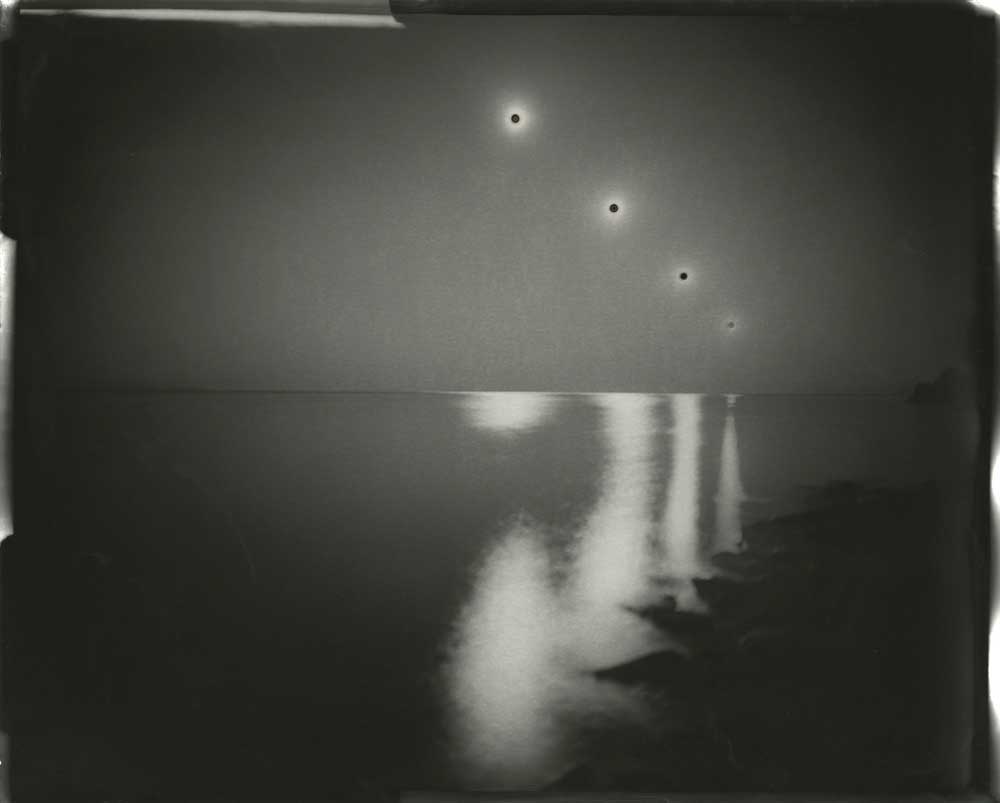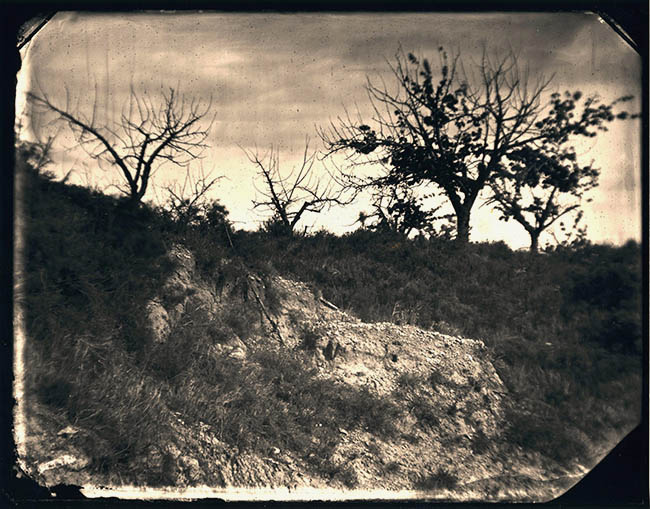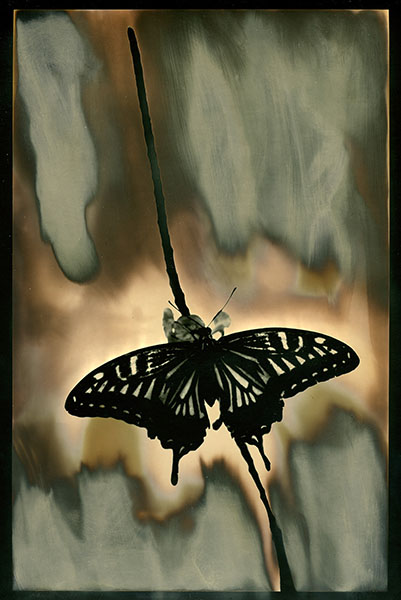

The DASS Art alcohol gel process is the simplest way to learn how to create digital image transfers with very accessible supplies. This particular process allows you to transfer images from inkjet transparency film to porous waterleaf type printmaking papers. You are able to produce images ranging from beautifully detailed, rich, vibrant lithographic quality emulsion transfers to more uniquely faded artistic looks similar to old Polaroid image transfers. Any printer can be used to print on the transparency film as long as the ink set is pigment based...
DASS ART SuperSauce Concentrate Used with isopropyl alcohol to make SuperSauce Solution. You can use the solution to move pigment inkjet prints from DASS ART transfer films to a variety of substrates. Mix with 91% isopropyl alcohol to make the SuperSauce Solution, in small batches. Use undiluted as a primer for some transfer processes...
Print an image on DASS ART Premium Transfer film with pigment inks and a paper profile that uses photo black ink. Leave two inches of blank film at two sides. This is needed to clip the image in place on the transfer board. The print needs to dry at least one hour or dry it with a hair dryer...

The Cyanotype, which is also known as ferro-prussiate or blueprint was invented by Sir John Herschel in 1842, when he discovered that ferric (iron) salts could be reduced to a ferrous state by light and then combined with other salts to create a blue-and-white image. Not long after, Anna Atkins, one of the few women in photography during that century, published the first book with photographs instead of illustrations, "British Algae: Cyanotype Impressions" Introduction Cyanotype is a contact printing process. You can use traditional black and white negatives (35mm, 120, 4x5, etc.), everyday objects such as flowers or leaves—in the style of Anna Atkins, or make digital negatives from scans or digital images...
Is it possible to get a color print from black & white film? Occasionally, the question comes up about whether or not a black and white negative can be printed on color paper. It is possible, however you will get a monochrome print, meaning that it will only have varying shades of one color. You will not get the colors that were in the original subject when photographed...
Events In 500 B.C. 500 BC - Mo Ti (China) : Creates the first pinhole camera. Events In 300 B...
In Lith Printing black and white negatives are overexposed (usually by two or three stops) onto conventional black and white paper. The paper is then developed in a highly diluted lithographic A/B developer. The result is a print that nearly jumps off the page because the developer increases the edge-sharpness (or accutance) in the higher contrast areas of the print. Lith prints are also usually warm-toned ranging widely from caramel to burnt-ochre...
A method for printing photographs in these precious metals was first patented in 1855 by William Willis, an Englishman. The permanence of silver based prints was suspect, and photographers wanted a process where the image was sure to last. Platinum is an ideal candidate, as it is very permanent. By the turn of the 20th century, platinum had become the favored paper of fine art photographers...

Between my involvement as a teacher and with PhotoAlliance, I have the opportunity to see some very innovative work. This past year I have had the great pleasure of watching Chris McCaw develop a wonderfully inventive series called Sunburns. Chris is a young photographer living here in San Francisco known for his platinum printing and view camera work. He has been using very out-dated silver based photographic paper in place of film, placed directly in his larger-format cameras...
Although pyrogallol (pyro) is the oldest b&w developer and was dominant in the 19th century, it was mostly ignored in the 20th century except for a few photographers mostly on the west coast. About 30 years ago, John Wimberly and I created a resurrection of this developer. For some time these formulas had to be made in each photographer's darkroom. However the formulas proved so popular that several commercial sources are available for both John Wimberly's WD2D and my PMK...
I introduce the possibilities of liquid emulsions to students in their third semester of photography. After two semesters of learning camera anatomy and functions, darkroom etiquette, and quality black and white print production, students begin to explore alternative approaches to darkroom printing. Photography's inherent reproducibility is both a gift and a curse. It lends itself to making saleable editions and to widely disseminating original prints...
People usually think of doing tintypes in large format cameras such as 4 x 5 or 8 x 10's, but for years I have been encouraging students to use any type of camera they have on hand. Brownies and pinhole cameras have been used as well as plastic cameras, one that has become a favorite is – the Holga. Dry plate tintypes are not faux tintypes. Gelatin emulsion tintypes were made commercially (by Kodak and others) as early as the 1880’s...
I will never forget the day I met Jean Pierre Sudre standing in his darkroom viewing his works in mordançage. It was the summer of 1983 in Lacoste, France and as I stood there waiting to be introduced, I was taken by his sparkling blue eyes and the knowledge that this was someone that had figured out life. The Maine Photographic Workshops were beginning to organize photographic programs in Provence conducted by Kate Carter and Craig Stevens and I was assisting my former teachers. Another friend of the Workshops, Ginette Vachon, had told Craig about this incredible photographer and his wife Claudine...
An ether-rich liquid is poured onto a sheet of glass, and deliberately flowed to the edges... Thus begins the process of making collodion film from scratch. Collodion requires an on-site darkroom to produce hand-sensitized plates one at a time, where you will be mixing flammable and poisonous chemicals, mastering hand skills, and facing an extensive learning curve. Why then, in the age of digital convenience and despite all these obstacles, has the wet-plate collodion process captured the attention of thousands of photographers and artists?..
Placing plate holder in camera Making the exposure After the exposure is made, the plate holder is secured, removed from the camera, and brought back to the darkroom. The plate is removed from the holder and the developer, a dilute solution of ferrous sulfate (iron), acetic acid, and alcohol are gently poured onto the collodion side of the plate and rocked. The image gradually becomes visible within a few seconds as the areas exposed by light entering the camera are converted to metallic silver. When development is complete in a minute or two, the developer is removed by thoroughly washing with clean water...

When the collodion process was popular and new, only those who made negatives and prints were called "Photographers." Tintypes were made by "Tintypists" or "Ferro-typists", ambrotypes by "Ambrotypists," etc, and were not considered to be as serious. While there was undoubtedly a higher degree of skill required to produce negatives, the term "Photographer" also implied ownership of a brick and mortar studio where customers could return to, to pick up their prints, while tintypists were often itinerants moving from town to town. Print from damaged negative Retouched negative using opaque Retouched tissue with clouds Final salt print Didactic set of Rochester High Falls © Mark Osterman There were exceptions like Julia Margaret Cameron and Oscar Rejlander, but the vast majority of photographers of the period strove for "perfect" reproduction from life...
In recent times, printers of platinum/palladium, gum, carbon, salt and albumen prints have made negatives with ortho film, digital facsimiles or conventional silver gelatin films. Collodion negatives, on the other hand, were the negatives of choice when most of these printing processes were introduced. These negatives can be tailored for printing any of the "alternative" printing processes, as well as developed-out silver gelatin and digital prints. Light Pours In, France Scully Osterman, collodion negative Light Pours In, France Scully Osterman, waxed salt print Reverie, France Scully Osterman, waxed salt print For the most part, contemporary artists have only scratched the surface of collodion as a medium...
A Historical Perspective William Willis invented and patented the Platinotype processes in 1879. By the 1930's the commercial availability of platinotype paper had come to an end. During this period of time photographers had marveled at the ability of platinum to record fine detail and subtle to dynamic tonal ranges. Platinum printing became the choice of many photographers of that time period, P...
It's a glorious day when the mind discovers something new. For over thirty years I've been making sharp, toned, large format photographs of the landscape and still lifes. Then one day three years ago I found myself photographing underwater---a world where I had spent much of my youth, and a world most people will never experience. These photographs were a collaboration with Camille Lenore, a fellow diver and photographer...

Click to enlarge image Chromoskedasic is a unique darkroom process that provides fun darkroom experimentation for those who like to put "play" back into the darkroom. In a nutshell, Chromoskedasic Sabatier is a black and white print that has been freshly developed but not yet fixed and is subjected to two mild photographic solutions, an activator and a stabilizer, while under room light. These chemicals in the presence of light will produce deep red-browns, blues, yellows, oranges, greens and even purple. Saying the word "chromoskedasic" is more complex than doing the process, ultimately...